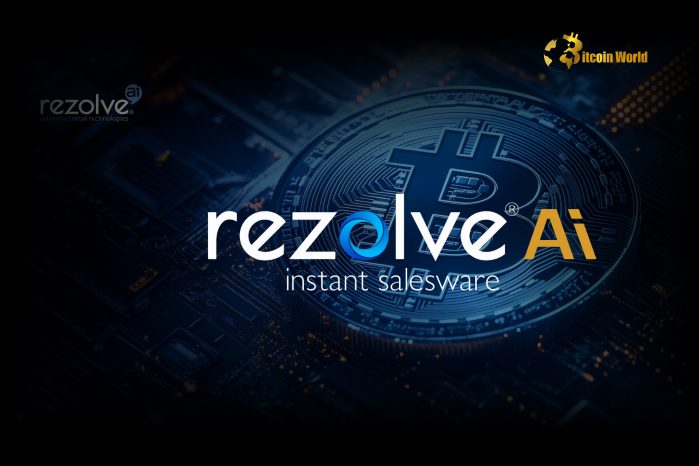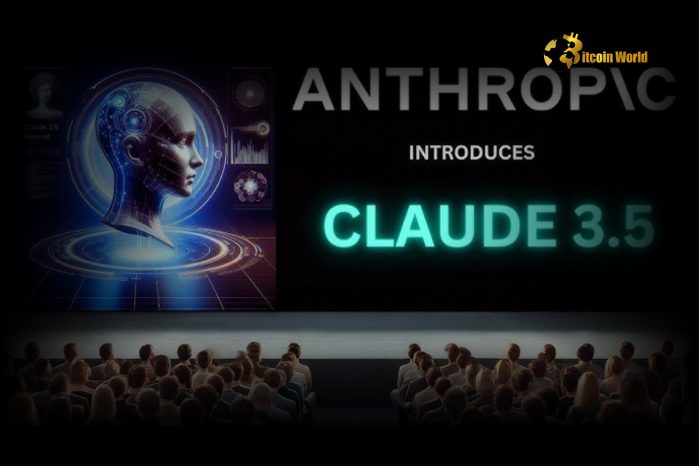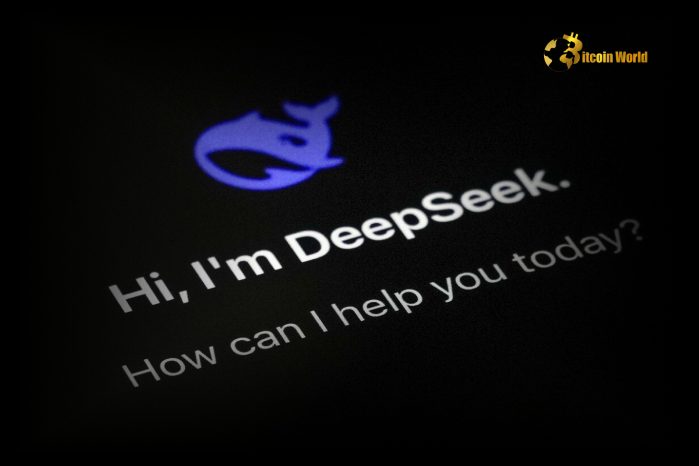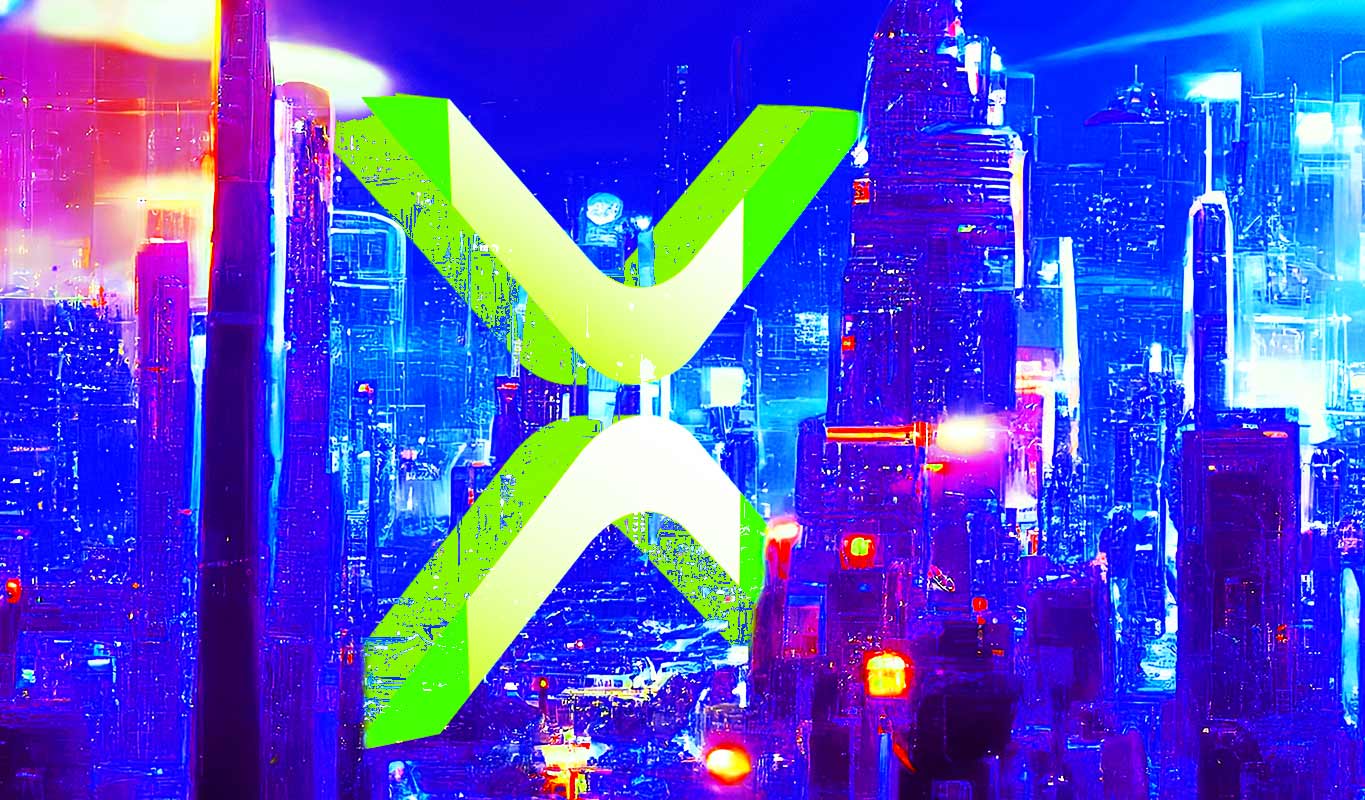
In a monumental stride towards mainstream cryptocurrency adoption, Rezolve AI (NASDAQ: RZLV), a frontrunner in AI-powered commerce solutions, has just dropped a bombshell. The company announced its ambitious plan to establish a staggering $1 billion Bitcoin treasury . This isn’t just dipping a toe into the crypto waters; it’s a full-fledged dive, signaling a profound shift in how businesses are viewing and integrating digital assets. Starting with an initial investment of $100 million, this initiative is set to fuel Rezolve AI’s upcoming crypto payment platform, developed in collaboration with Tether. What does this mean for the future of digital transactions and the broader crypto landscape? Let’s delve into the details. Why a Bitcoin Treasury? Understanding Rezolve AI’s Bold Strategy Why is Rezolve AI making such a significant bet on Bitcoin? The answer lies in the evolving landscape of commerce and the increasing demand for seamless, digital payment solutions. Establishing a Bitcoin treasury offers Rezolve AI several strategic advantages: Future-Proofing Payments: By holding Bitcoin, Rezolve AI is positioning itself at the forefront of the digital payment revolution. As cryptocurrencies gain wider acceptance, having a Bitcoin reserve allows for smoother and more efficient crypto payments within their ecosystem. Enhanced Platform Utility: The $1 billion treasury directly supports Rezolve AI’s new crypto payment platform. This substantial backing can instill confidence in users and partners, encouraging greater adoption and usage of the platform for digital asset transactions . Strategic Asset Diversification: In a world of economic uncertainty, diversifying corporate treasuries with assets like Bitcoin can act as a hedge against inflation and traditional market volatility. Bitcoin’s finite supply and decentralized nature offer a unique value proposition in this context. Attracting Crypto-Savvy Customers: Publicly embracing Bitcoin and crypto payments can attract a new wave of customers who are already active in the cryptocurrency space. This move can enhance Rezolve AI’s brand image as an innovative and forward-thinking company. The Power of Crypto Payments: Transforming Transactions Crypto payments are rapidly gaining traction, and for good reason. They offer a compelling alternative to traditional payment methods, bringing a host of benefits to both businesses and consumers: Benefit Description Lower Transaction Fees Compared to credit card processing fees and bank transfer charges, crypto transactions often come with significantly lower fees, especially for international payments. Faster Transaction Speeds Cryptocurrency transactions can be processed much faster than traditional banking systems, often settling within minutes, regardless of borders or time zones. Increased Security and Transparency Blockchain technology provides a secure and transparent ledger for all transactions, reducing the risk of fraud and enhancing accountability. Wider Accessibility Cryptocurrencies can enable access to financial services for individuals who are unbanked or underbanked, fostering greater financial inclusion. Global Reach Crypto payments facilitate seamless cross-border transactions without the complexities and delays associated with traditional international banking. Rezolve AI’s foray into crypto payments , backed by a substantial Bitcoin treasury, is poised to leverage these advantages and offer a more efficient and user-friendly payment experience. Rezolve AI and Tether Collaboration: A Synergistic Partnership for Digital Asset Adoption The collaboration between Rezolve AI and Tether is a crucial element in this initiative. Tether, the issuer of USDT, the world’s largest stablecoin, brings significant expertise and infrastructure to the table. This partnership can streamline the integration of digital asset transactions into Rezolve AI’s platform. Here’s why this collaboration is strategically important for driving digital asset adoption : Stablecoin Integration: Tether’s USDT provides stability within the often-volatile cryptocurrency market. Using a stablecoin for transactions can mitigate price fluctuation risks for both merchants and customers. Tether’s Ecosystem: Tether boasts a vast ecosystem and established infrastructure for crypto payments . Partnering with them provides Rezolve AI with access to proven technology and a wide network. Enhanced User Experience: By leveraging Tether’s technology, Rezolve AI can offer a seamless and reliable crypto payment experience, making digital asset transactions more accessible to a broader audience. Driving Broader Adoption: This collaboration sends a powerful message to the market, signaling the growing convergence of AI, commerce, and cryptocurrency. It can encourage other businesses to explore and adopt digital asset transactions . Navigating the Challenges: Is a Bitcoin Treasury Without Risks? While the potential benefits of a Bitcoin treasury are significant, it’s crucial to acknowledge the associated challenges and risks: Price Volatility: Bitcoin’s price is known for its volatility. A significant downturn in the Bitcoin market could impact the value of the treasury, potentially leading to financial risks. Regulatory Uncertainty: The regulatory landscape for cryptocurrencies is still evolving globally. Changes in regulations could impact the operation and legality of Bitcoin treasuries and crypto payments . Security Concerns: Safeguarding a large Bitcoin treasury requires robust security measures to prevent theft or loss. Companies must invest in secure storage solutions and protocols. Accounting and Tax Implications: Accounting for and reporting Bitcoin holdings can be complex, and tax regulations for cryptocurrencies vary across jurisdictions. Businesses need to navigate these complexities carefully. Rezolve AI will need to proactively address these challenges through robust risk management strategies, regulatory compliance efforts, and secure operational practices to fully realize the benefits of its Bitcoin treasury initiative. The Future of Digital Asset Adoption: Rezolve AI Leading the Charge Rezolve AI’s $1 billion Bitcoin treasury is more than just a financial maneuver; it’s a bold statement about the future of commerce and the increasing importance of digital asset adoption . This initiative could serve as a catalyst, encouraging other major corporations to consider integrating cryptocurrencies into their operations. As crypto payments become more prevalent, and as companies like Rezolve AI pave the way, we can expect to see a significant acceleration in the mainstream integration of digital assets into the global economy. This move by Rezolve AI underscores a fundamental shift: cryptocurrencies are no longer a fringe technology but are increasingly becoming a core component of the future financial landscape. By embracing Bitcoin and crypto payments , Rezolve AI is not just adapting to change; it’s actively shaping the future of commerce. To learn more about the latest crypto market trends, explore our article on key developments shaping Bitcoin institutional adoption.
Bitcoin World
You can visit the page to read the article.
Source: Bitcoin World
Disclaimer: The opinion expressed here is not investment advice – it is provided for informational purposes only. It does not necessarily reflect the opinion of BitMaden. Every investment and all trading involves risk, so you should always perform your own research prior to making decisions. We do not recommend investing money you cannot afford to lose.
Top Altcoins Developers Focused on Over the Last Month Revealed – Ethereum Ranks Seventh, Leader Unchanged

Cryptocurrency analysis company Santiment shared the current status of the list of altcoins that crypto developers focus on the most in its latest assessment. The altcoin world continues to be very active and there have been many important developments in the last month. With Donald Trump taking office as the President of the United States, the SEC administration, which has become a cryptocurrency ally, has faced many altcoin spot ETF applications. Along with the developments, there have been significant changes in the rankings of the altcoins that developers focus on. Santiment created the list by examining the code changes on the public Github pages of cryptocurrency projects. Here are the altcoins and developer scores that crypto developers have focused on the most in the last 30 days, according to Santiment: Internet Computer (ICP) – 737 Chainlink (LINK) – 654 Optimism (OP) – 456 Cardano (ADA) – 454 Starknet (STRK) – 426 Hedera (HBAR) – 424 Ethereum (ETH) – 321 Polkadot (DOT) – 318 Kusama (KSM) – 318 EigenLayer (EIGEN) – 313 Related News: Wall Street Giants are Giving Up One by One in the Face of the Cryptocurrency Industry - Billionaire`s Company Decides to Join According to the data, ICP maintained its position as the altcoin that received the most interest from developers in the last month. However, while ADA fell on the list, LINK and OP rose. Although Ethereum was relatively behind on the list, it was noteworthy that there were many Ethereum layer-2 networks. *This is not investment advice. Continue Reading: Top Altcoins Developers Focused on Over the Last Month Revealed – Ethereum Ranks Seventh, Leader Unchanged Bitcoin World

Revolutionary Claude 3.7 Sonnet: Anthropic Unveils Breakthrough Hybrid AI Model with Limitless Thinking
In the fast-paced world of artificial intelligence, where innovation is the name of the game, Anthropic has just dropped a bombshell. Imagine an AI that doesn’t just spit out quick answers, but actually takes its time, ponders, and ‘thinks’ deeply about your questions. That’s precisely what Anthropic’s new AI model , Claude 3.7 Sonnet, promises to deliver. For crypto enthusiasts and tech-savvy individuals who understand the power of sophisticated algorithms, this development is a game-changer. Let’s dive into why Claude 3.7 Sonnet is making waves and what it means for the future of AI interactions. Unveiling Claude 3.7 Sonnet: A New Era of AI Reasoning Model Anthropic is calling Claude 3.7 Sonnet the industry’s first “hybrid AI reasoning model .” But what exactly does that mean? Unlike typical AI models that offer a single approach to answering questions, Claude 3.7 Sonnet is designed to be versatile. It can provide both rapid, real-time responses and more considered, in-depth answers, depending on what you need. This is a significant leap forward, moving away from the often confusing model selection process that users currently face with many AI chatbots. Here’s a breakdown of what makes Claude 3.7 Sonnet stand out: Hybrid Reasoning: This innovative design allows the AI model to switch between quick and deep thinking modes within a single model. No more choosing between different models for different levels of complexity. User-Controlled Reasoning: You get to decide whether to activate the model’s “reasoning” abilities. This control lets you tailor the AI’s approach to the task at hand, whether you need a fast answer or a thoroughly considered one. Simplified User Experience: Anthropic aims to streamline AI interaction. Instead of overwhelming users with numerous model options, Claude 3.7 Sonnet offers a unified solution that adapts to various needs. How Does Anthropic’s Revolutionary Hybrid AI Reasoning Model Work? The core concept behind Claude 3.7 Sonnet is to mimic human-like thinking processes. Traditional AI models often rely on pattern recognition and quick data retrieval. However, reasoning models like Claude 3.7 Sonnet take a different approach. They break down complex problems into smaller, manageable steps. This process, inspired by deductive reasoning, allows the AI to explore different angles, consider various possibilities, and ultimately arrive at a more accurate and nuanced answer. Think of it like this: Feature Traditional AI Models Claude 3.7 Sonnet (Hybrid Reasoning Model) Reasoning Approach Direct, pattern-based response Step-by-step problem decomposition Thinking Time Fast, immediate answers Variable, user-controlled ‘thinking’ duration Model Selection Multiple models for different tasks Single, versatile hybrid model Output Quality Good for simple queries Enhanced accuracy and nuance for complex questions This method is especially beneficial for tasks requiring in-depth analysis, such as complex coding problems or intricate strategic planning. For those in the crypto space dealing with complex market analysis or smart contract development, the potential of a robust reasoning model is immense. Claude 3.7 Sonnet vs. The Competition: Pricing and Performance Benchmarks While Claude 3.7 Sonnet boasts impressive capabilities, it’s essential to consider its cost and performance relative to other AI models in the market. Anthropic has priced Claude 3.7 Sonnet at $3 per million input tokens and $15 per million output tokens. Let’s see how this stacks up against competitors like OpenAI and DeepSeek: Model Input Tokens (per 1M) Output Tokens (per 1M) Type Claude 3.7 Sonnet $3.00 $15.00 Hybrid Reasoning OpenAI o3-mini $1.10 $4.40 Reasoning Model DeepSeek R1 $0.55 $2.19 Reasoning Model Claude 3.7 Sonnet is positioned as a premium offering, reflecting its hybrid nature and advanced capabilities. While models like o3-mini and R1 are cheaper, they are strictly reasoning models and lack the hybrid versatility of Claude 3.7 Sonnet. Anthropic argues that the enhanced performance and flexibility of their AI model justify the higher price point, especially for users who need a comprehensive AI solution. Performance benchmarks further support Anthropic’s claims: SWE-Bench (Real-world coding tasks): Claude 3.7 Sonnet achieved 62.3% accuracy, outperforming OpenAI’s o3-mini (49.3%). TAU-Bench (Simulated retail interaction): Claude 3.7 Sonnet scored 81.2%, surpassing OpenAI’s o1 model (73.5%). These results indicate that Claude 3.7 Sonnet excels in real-world applications, particularly in complex tasks that demand robust reasoning and adaptability. Anthropic’s Vision: AI That Thinks Like You, But Better? Anthropic AI isn’t just aiming for incremental improvements; they’re envisioning a future where AI seamlessly integrates into our daily lives, understanding our needs and adapting to them intuitively. Diane Penn, Anthropic’s product and research lead, highlighted this vision, stating that eventually, Claude should automatically determine the optimal “thinking” time for each question, much like humans do. This approach is reflected in Claude 3.7 Sonnet’s “visible scratch pad” feature. Users can actually see Claude’s thinking process for most prompts, offering unprecedented transparency into how the AI model arrives at its conclusions. While some parts of the process might be redacted for safety reasons, this level of visibility builds trust and provides valuable insights into the AI’s reasoning. Claude Code: An Agentic Coding Tool for Developers Alongside Claude 3.7 Sonnet, Anthropic AI is also launching Claude Code, an agentic coding tool currently in research preview. This tool is designed to empower developers by allowing them to interact with Claude directly from their terminal. Imagine being able to: Analyze Codebases: Use simple English commands to understand project structures. Modify Code: Make changes to codebases using natural language instructions. Automate Tasks: Test for errors and push code to repositories directly through Claude Code. Claude Code promises to streamline the development process, making it more efficient and accessible. For developers in the crypto space working on blockchain projects, smart contracts, or decentralized applications, this tool could significantly enhance productivity and simplify complex coding tasks. The Road Ahead: Anthropic Leading the AI Revolution? Anthropic AI is making a bold move by releasing Claude 3.7 Sonnet and Claude Code. In a market where new AI models are constantly emerging, Anthropic is aiming to lead the pack, shifting from a historically cautious approach to a more assertive stance. However, the competition is fierce. OpenAI is expected to release its own hybrid AI model soon, as hinted by CEO Sam Altman. The race for AI supremacy is heating up, and Anthropic’s latest innovations are a clear signal that they are ready to compete at the highest level. The question remains: Can Anthropic maintain its lead? With Claude 3.7 Sonnet’s groundbreaking hybrid reasoning capabilities and Claude Code’s developer-centric tools, Anthropic AI is certainly positioning itself as a major player in the AI revolution. For those in the cryptocurrency and broader tech world, keeping a close eye on Anthropic’s advancements is crucial, as they are shaping the future of how we interact with artificial intelligence. To learn more about the latest AI market trends, explore our article on key developments shaping AI features. Bitcoin World











